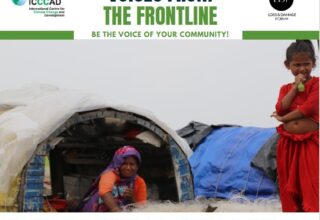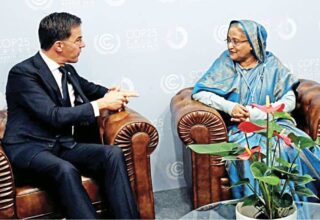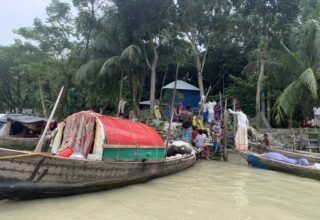
The upcoming talks must agree to set up a funding facility to help countries deal with the growing harm caused by climate change impacts
It has now been 30 years since the United Nations Framework Convention on Climate Change (UNFCCC) was signed at the Earth Summit in Rio de Janeiro, Brazil, in 1972 – and we are about to hold the 27th annual Conference of Parties (COP27) to the convention in Sharm el-Sheikh, Egypt, next month.
However, this COP is going to be unlike any previous U.N. climate summit as we have crossed the threshold of suffering all over the world the impacts attributable to emissions of greenhouse gases since the Industrial Revolution over a century ago. Hence we have entered a new era of “loss and damage” from human-induced climate change.
Thus, COP27 will be COP1 of this new era – and we will have to rise to the occasion.
The first thing to note about the topic of loss and damage is that it is both an old, as well as a new, agenda issue at the COPs.
The issue of loss and damage was raised by the small island states three decades ago when the UNFCCC was first negotiated, but they didn’t get much support at that time. Then more recently, at COP19 in Warsaw, Poland, the Alliance of Small Island States was joined by the Least Developed Countries and African Group of Negotiators to successfully argue for the adoption of the Warsaw International Mechanism (WIM) for loss and damage in 2013.
The WIM was set up with an Executive Council comprising representatives from both developed as well as developing countries, and has been doing some excellent work on clarifying the different types of climate change impacts, such as economic versus non-economic losses and damages, fast-impact events like hurricanes and floods versus slow impacts such as sea level rise, and also looking at the forced displacement of people who lose their livelihoods due to climate stresses.
However, the WIM was still very much a technical body without a mandate to do anything about losses and damages once they started to occur.
Hence in COP21 in Paris, France, in 2015, as part of the Paris Agreement, developing countries fought for, and succeeded in, including Article 8 of the Paris Agreement to address loss and damage as separate from adaptation.
Once again, in COP25 in Madrid, Spain, developing countries advocated for a new entity to support developing countries to deal with loss and damage. This was agreed upon as the Santiago Network on Loss and Damage (SNLD).
However, while these decisions certainly represented progress in discussing how to avert, minimize and address losses and damages from human-induced climate change, they did not actually do anything or fund any of the victims.
Agenda fight?
Hence in COP26 in Glasgow, Scotland, in 2021, developing countries demanded the creation of the Glasgow Facility for Finance for Loss and Damage, which was put in the draft text of the final Glasgow Climate Pact by Pakistan on behalf of all developing countries. But by the time the final Glasgow Pact was adopted, developed countries had changed the language to holding a Glasgow Dialogue on Finance for Loss and Damage – and that too for three years. This was a great disappointment to all the poor and vulnerable nations that are on the frontlines of global warming.
They have once again put finance for loss and damage on the provisional agenda for the upcoming COP27 in November. This agenda item will need to be adopted by all countries through consensus, and if even one objects, then it will not stand. If the agenda item on finance for loss and damage fails to be adopted at the beginning of COP27, the entire conference will be deemed a failure before it even starts.
Assuming that the agenda item is adopted, then governments can enter into negotiations around the many genuine questions that have arisen about how to raise funds to pay for loss and damage, manage the funds, and distribute the funds. These are all very legitimate questions that need to be discussed in a spirit of positive engagement going forward.
The best outcome on this issue at the end of COP27 would be an agreement to establish a Finance Facility for Loss and Damage – and then to come back at COP28 in Abu Dhabi in 2023 to work out the details. The way new institutions are established and implemented in the UNFCCC process always takes several COPs, but unless there is a decision to kickstart the process, nothing will happen.
Originally this article was published by Context which is a media platform created by the Thomson Reuters Foundation. October 24, 2022.
Saleemul Huq is director of the International Centre for Climate Change and Development in Bangladesh and a senior associate at the London-based International Institute for Environment and Development.









